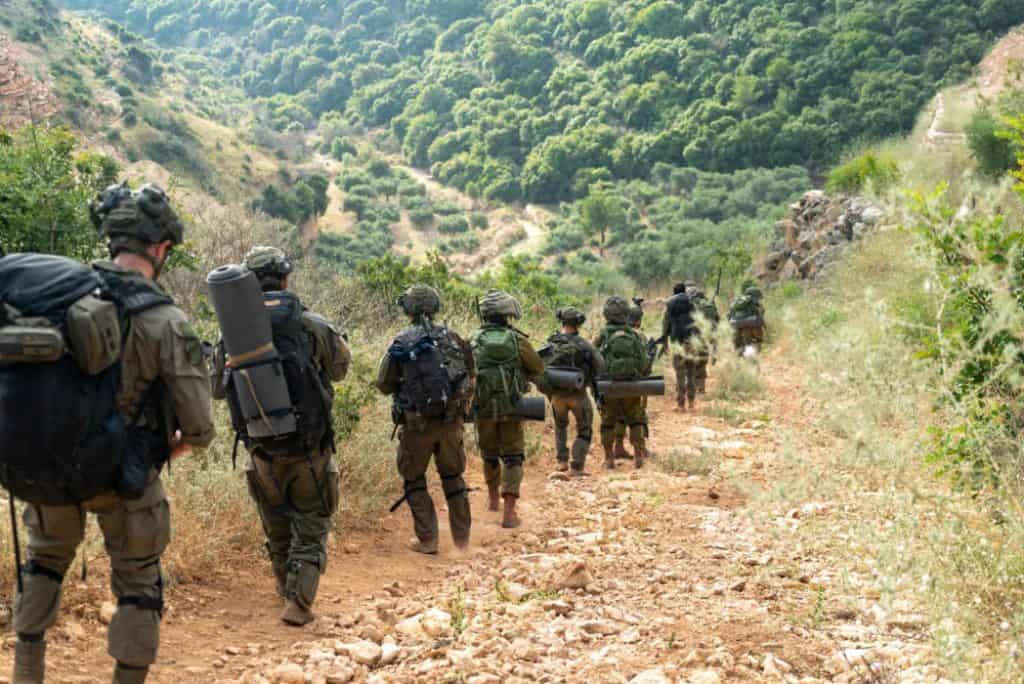
Israeli Prime Minister Benjamin Netanyahu and IDF Chief of Staff Lieutenant General Herzi Halevi attended army exercises in northern Israel on June 25 and 26. The drills are part of eight months of training that various IDF units deployed to the north have cycled through in preparation for a possible war with Hezbollah.
The exercises took place as Israeli President Isaac Herzog spent two days visiting communities in northern Israel. Herzog visited the city of Safed as well as communities near the Lebanese border, such as the Christian town of Jish and Kibbutz Hanita.
Netanyahu arrived in northern Israel on June 25 to visit members of the IDF’s 55th Reserve Paratroopers Brigade, which participated in an exercise. “The exercise is one of a series of exercises carried out by IDF brigades to boost fitness and evaluate plans for an attack in Lebanon,” the Prime Minister’s Office said. Netanyahu met with the head of IDF Northern Command, Major General Ori Gordin, along with brigade and battalion commanders. Netanyahu’s new military secretary, Major General Roman Gofman, accompanied him.
Netanyahu commented that the drill he viewed was “very impressive in terms of capabilities, mobilization, and implementation.” The 55th Brigade fought in Gaza in December during early operations against Hamas. The unit participated in the key battle for Khan Younis in southern Gaza before being redeployed in late January.
Halevi visited the brigade exercise on June 26, a day after the prime minister, and also met with Gordin and the head of the 55th Brigade, Colonel Oded Ziman. “During the multi-branch exercise, the brigade combat team trained for extreme scenarios, combat in complex and mountainous terrain, activating fire, and urban warfare as part of increasing readiness in the northern arena,” the IDF said.
Images from the drill distributed by the IDF showed soldiers hiking in rough terrain, including hill country dotted with olive trees and small streams, and toward a village in northern Israel. These villages and the terrain are similar to those found in southern Lebanon.
The recent training is one of many programs the IDF has conducted with various units deployed in the north. The troops are a mix of reservists, such as the 146th Division, and regular soldiers, such as the infantry and armored brigades of the 36th Division. The training’s goal is not only to practice for scenarios that may be faced in fighting Hezbollah in Lebanon but also to address the need to work closely with the air force, navy, and other units that might deploy if Israel faces more cross-border attacks from rockets, missiles, and drones.
Israel currently faces threats on multiple fronts. An Iranian-backed militia in Iraq targeted the southern Israeli port city of Eilat with a drone on the evening of June 25. The drone arrived near the city at two in the morning on June 26 and was confronted by Israel’s air defenses. The IDF said the UAV came from the direction of the Red Sea and “fell off the coast of Eilat. The UAV was monitored by IDF soldiers throughout the incident and it did not cross into Israeli territory. During the incident, an interceptor was launched toward the UAV.”
It was unclear if the UAV had been intercepted or fallen into the water of its own accord. Even though the drone was launched from Iraq, it would have had to take a circuitous route to approach Israel from the Red Sea and likely cross over Jordan or Saudi Arabia to achieve this flight path. On June 25, Iranian-backed Houthis in Yemen also claimed to have targeted multiple ships at sea, part of their eight-month campaign against shipping heading for the Red Sea. In addition, Hezbollah claimed several attacks against Israel on June 26, including firing anti-tank missiles at the northern town of Metulla.
In Washington, Israel’s Defense Minister Yoav Gallant continued his high-level meetings seeking to shore up support and coordinate with the United States. He met with US National Security Advisor Jake Sullivan on June 26. “We have made significant progress in addressing force build-up and munition supply for the State of Israel,” Gallant said. The meetings have focused on the war against Hamas in Gaza, Hezbollah’s threats, and the wider Iranian threat to Israel and the region.







